Boeing sets pace for composite usage in large civil aircraft
Innovative use of international supplier base to revolutionize aircraft manufacture.
As commercial air carriers slowly recovered from the negative financial fallout of the terrorist attacks of September 11, 2001, aircraft manufacturing rivals The Boeing Co. (Seattle, Wash.) and Airbus Industrie (Toulouse, France) developed significantly different views of the future of commercial air travel. Each cited roughly the same growth statistics, in terms of future travel, and predicted more intense competition between carriers. But Airbus reasoned that airlines will decrease the number of nonstop flights between large numbers of paired cities even as populations continue to concentrate in major metropolitan areas. Banking on these predictions, Airbus conceived the super-jumbo A380, which could be configured to carry from 555 to as many as 890 passengers and fly at lower per-passenger costs. Boeing, on the other hand, had come to expect these factors to stimulate an increase in new nonstop flights and growth in the number of trips between paired cities. According to Boeing, this will tend to discourage development of planes with an increased number of passenger seats. By Boeing's calculation, jumbo craft (i.e., Boeing's 747 and Airbus' A380), will account for only 4 percent (790) of the total commercial jet fleet, while almost 4,300 are expected to be regional jets over the next two decades. Moreover, rising fuel prices underscored airline interest in greater efficiency, especially in the mid-sized aircraft that make up the greatest number of in-service commercial jets.
Against this backdrop, Boeing unveiled a new plane, then dubbed the 7E7 ("E" for "efficient") and more recently renamed the 787 Dreamliner: A conventionally-configured, mid-size, twin-engine, twin-aisle aircraft in the same category as Boeing's 767, but designed to take advantage of technologies already investigated for Boeing's now abandoned Sonic Cruiser concept. Its extensive use of structural composites and new-generation, super-efficient jet engines would, Boeing contended, offer airlines 20 percent greater fuel economy and an equal reduction in pollutant emission, as well as a 10 percent lower seat mile cost than today's in-service aircraft. Composites would yield better fatigue and corrosion resistance and higher strength-to-weight ratios, provide for a more integrated structure, and increase the useful life and residual value of each aircraft. Further, composite resistance to condensation would allow engineers to increase cabin humidity to enhance passenger comfort.
Boeing estimates that the 787 will be 30,000 lb to as much as 40,000 lb lighter than the Airbus A330-200, depending on which of the following three 787 configurations is chosen. The 787-3, a shorter range configuration with a longer body and a wing "optimized for shorter-range flights" (3,500 nautical miles/6,500 km) will accommodate up to 296 passengers in two classes, with a fuselage cross-section of 5.8m/19 ft, wing span of 50m to 52m (165 ft to 170 ft), and fuselage length of 56m/185 ft. Two additional versions will carry fewer passengers but have increased flying range. The 787-8 will have a wider wingspan than the 787-3 (60m/197 ft), fly 8,500 nautical miles (15,7000 km) and seat 223 in a twin-aisle, three-class configuration. The 787-9, with a slightly shorter range of 8,300 nautical miles (15,400 km), will have the same wingspan as the 787-8 but a longer body than the other two (62m/202 ft) to accommodate 258 passengers.
Retaking the composites lead
With its 787 Dreamliner, Boeing will become the first airframer to launch a full-size commercial aircraft with composite wings and fuselage. Acknowledging the efforts behind Raytheon's composite business jet and Northrop's stealthy composite B2 Bomber, Boeing is nonetheless making a significant step change by scaling up in size and meeting the 20 hour-per-day service needs and cost pressures of the passenger airline business. Composites on the 787 will account for 50 percent of the aircraft's structural weight. Aluminum, by contrast, will comprise only 12 percent of the aircraft. In fact, titanium will make up a greater percentage than aluminum, at 15 percent. Steel will comprise another 10 percent and other metals, the remaining 5 percent. By contrast, the Boeing 777 is 12 percent composites and 50 percent aluminum, and composites make up about 25 percent of the total airframe on the Airbus A380. Significantly, Boeing estimates a 19:1 part count reduction, where composites replace aluminum. This very significant difference in material selection philosophy is likely to remain for at least a decade, as Airbus has been adamant that it will not, for the foreseeable future, use composite materials for the main fuselage.
Looking at Boeing's publicly released diagram of material usage (p. 68), it is hard to believe that composites make up only 50 percent. On the 787's exterior surface, the only visible metal is on the leading edges and engine pylons. The design of the former is driven by bird strike and the latter by engine fire requirements where metals offer some benefits. Most of the metals that make up the remaining 50 percent are found in very large forgings and castings at the highly loaded joints between composite structures and where the undercarriage is attached.
Despite the imminence of this program — first flight in mid-2007 and entry into service in 2008 — much of the design specifics and material selections are still under wraps. However, Boeing and a number of key suppliers have revealed key features of the design/build strategy.
Composite materials
The material being used on the 787's primary structures, such as the wings and fuselage, is a redevelopment of the Toray Composites America (Tacoma, Wash.) Toray 3900-2 prepreg material (comprised of intermediate-modulus T800 carbon fiber and a toughened 350°F-cure epoxy) used on the 777. The new version, used in both a unidirectional tape and woven formats, has equal design and component manufacturing performance as the original material specified for the 777. But Toray has changed the method for adding the thermoplastic toughening agent to reduce its cost, and the more recent material product form is in production use on the 777 on a substitution basis. Many applications use T800 fibers (tensile strength of 5,490 MPA; tensile modulus of 30,000 kgf/mm2), but where suitable, standard-modulus carbon (e.g., Toray T700, 4900 MPA/23,500 kgf/mm2) and glass are also used.
Al Miller, director of advanced technology for the 787 program, reports that Boeing also intends to use resin film infusion (RFI) technologies in multiple areas on the airplane. Currently, application of RFI is planned for the movable trailing and leading edges on the wing and for fuselage frames (horizontal cross-beams that span the fuselage, each having two vertical supports to support the passenger cabin floor). Other applications continue to undergo cost/benefit analysis.
Boeing also is applying state-of-the-art technology to the materials used in the interior, often perceived as a low-technology area. Boeing's unnamed suppliers will be adding nanotechnology-based additives to selected polymers used in the interiors, to improve flammability properties.
Equipment & processes
On the fuselage, Boeing has taken advantage of Raytheon's (Wichita, Kan.) experience with the Premier I business jet program (see HPC March 2002, p. 12). According to Boeing Wichita's Doug Scott, Boeing leased two of Raytheon's Viper fiber placement machines, manufactured by Cincinnati Lamb (Hebron, Ky.), to begin developing subscale test panels. A full-scale, one-piece composite fuselage barrel section was unveiled in January this year. The 6.7m/22-ft long and approximately 5.8m/19-ft wide structure is the first, and so far, only major developmental piece available for public inspection.
This and other fuselage sections are being made by computerized lay-down of composite tape on a cylinder-shaped mandrel that is rotated as the tape is applied. After wrapping, the part is cured in an autoclave. The above photo shows a manufacturing trial specimen fuselage on its assembly fixture prior to fitting of the fuselage frames. The hat-sectioned longitudinal stringers are cocured with the fuselage skins, being placed in the mandrel before the fuselage outer skin's solid laminate is tape layed. After inspection, windows and doors are cut out.
Most of the frames are made from resin-infused carbon fiber, but Miller reports that specific design and cost issues in a few selected areas have resulted in a small number of titanium and aluminum frames. The composite frames are attached to the fuselage skin through carbon composite shear ties. Although Boeing is treating the frame design as confidential, the one photograph of the frame/fuselage assembly that has been released (bottom photo, this page) shows a separate "foot" between the longitudinal hat stringers, to better distribute the shear loads.
In a departure from standard practice, the horizontal stabilizer will combine the upper and lower skin laminates and the forward and aft spars (minus the leading and trailing edges) in a single-piece, cocured box, rather than as separate components. Boeing partner Alenia Aeronautica (Campania e Puglia, Italy) pioneered this innovative approach. Innovation on the vertical stabilizer is focused on implementing an advanced assembly method, which dramatically reduces assembly tooling and flow time.
Little information has been released on the design or manufacturing methods for the main wing boxes, which will be undertaken by Mitsubishi Heavy Industries (Tokyo, Japan). However, what is known is that the cured, solid laminate wing skins will be cut to net shape using a very large abrasive waterjet cutter (bed size of 36m by 6.5m or 118 ft by 21 ft), which will be built for Mitsubishi by Flow International Corp. (Kent, Wash.) at its facility in Jeffersonville, Ind.
Abrasive waterjet cutters can cut thick laminates quickly without overheating the laminate, as can happen with more conventional cutting techniques. Michael Ruppenthal, Flow's director of marketing, reports that 25mm/1 inch thick laminates could be cut at speeds as high as 0.67m/26 inches per minute. On the thinner areas, cutting rates could be increased to as high as 3m/120 inches per minute for a 6-mm/0.25-inch thick laminate. Mitsubishi is likely to be more conservative, Ruppenthal notes, cutting, for example, at a high of about 390 mm/15 inches per minute on the thicker skin sections.
Mitsubishi also has placed an order for two large automated tape laying (ATL) machines from machine tool manufacturer Forest-Liné (Capdenac, France), which will be used to fabricate the wing box. Forest-Liné has supplied similar equipment now in use by European aircraft manufacturers Airbus and Dassault. A third ATL machine will be delivered to Fuji Heavy Industries (manufacturer of Subaru automobiles) for use in manufacturing the 787's center wing box. Forest Liné's U.S. representative Carroll Grant (Aerospace Composites Consulting, Salt Lake City, Utah) notes that the machines ordered for he 787 program will be the first Forest Liné composites equipment sold to an aerospace manufacturer outside Europe. The three machines will feature Forest-Liné's Dual-Phase tape laying technology, which combines industry standard single-phase tape laying and the company's two-phase process into a single delivery head. In the single-phase process, the prepreg tape materials are cut to the proper shape as they are processed through the delivery head and then are layed on the tool with compaction pressure. By contrast, two-phase technology eliminates scrap removal and tape cutting from the layup process, two functions that can cause interruptions in the tape laying process. In the two-phase process, tape materials are kitted with an off-line cutting machine, respooled onto a cassette and then loaded into a tape layer delivery head on the machine gantry, which has no cutting capability.
One side of the delivery head has ultrasonic cutters and processes low complexity shaped tape courses with up to 12-inch wide prepreg tape. The other side of the delivery head is for processing 6-inch wide tape materials that have been "kitted" with the off-line cutting machine. Dual-Phase tape laying is expected to offer greater efficiency in production of large parts that have both complex-shaped courses and simple-shaped courses.
Engine fan cases on General Electric's (Fairfield, Conn.) GEnx jet engine, one of the two power plants that will be available to customers for the 787, are also made from composite materials, using an infusion process. This first use of an all-composite structure to contain fan blade failure represents a significant weight savings. The fan case will be fabricated by GKN Aerospace (East Cowes, Isle of Wight, U.K) at its U.S. manufacturing plant in the state of Alabama. GKN's Paul Cocker, VP and general manager at the Alabama Aerostructures site, claims the technology not only meets Boeing's aggressive weight and performance targets, but also saves considerable cost while dramatically improving product quality.
Israel Aircraft Industries (IAI, Tel Aviv, Israel) will design and fabricate floor structures at the rear of the fuselage under contract to Vought. These will include composite floor beams as well as a number of metallic parts. Although material suppliers were not disclosed by Boeing, IAI recently completed floor structures for the G-150 business jet (see related news item, p. 36), using sandwich structures with carbon/epoxy skins and aramid honeycomb core from M.C. Gill (El Monte, Calif.).
NSE Composites (Seattle, Wash.) has been asked to develop design tools under contract to Boeing to ensure that composite structures meet damage tolerance requirements.
Global supplier network
Although much of the technology used on the 787 is groundbreaking, what will be remembered in the long-term is the revolutionary way the supply base is being managed. Construction of the airplane will be one of the most international commercial aircraft efforts yet undertaken. U.S.-based Vought Aircraft Industries (Dallas Texas) and Alenia North America (Cupertino Calif., a sub. of Alenia Aeronautica) will share 26 percent of the work on the structure. Vought, according to its published statements, will produce two aft fuselage sections while others are fabricated by Alenia Italy. A joint venture between Vought and Alenia, called Global Aeronautica LLC (Charleston, S.C.), then will integrate the sections into the center and aft fuselage, representing about 60 percent of the overall fuselage structure). Thirty-five percent of the aircraft will be built in Japan. Fuji and Mitsubishi will share work on the critical composite wing structure while Kawasaki Heavy Industries (Kobe, Japan) will handle the main landing gear well, main wing fixed trailing edges and part of the forward fuselage. An equal percentage will be distributed among Boeing's and its partners' facilities in the U.S., Canada and Australia. Boeing will make the vertical tail fin in Frederickson, Wash. and the wing-to-body fairing in Winnipeg, Canada. Boeing's Australian subsidiary, Hawker de Haviland, is investing $175 million (USD) to prepare its Melbourne plant to manufacture the movable parts on the wing trailing edge, including the flaps and ailerons. Until recently Boeing also was to build the fixed and movable leading edges in Tulsa, Okla. and the flight deck and part of the forward fuselage in Wichita, Kan. However, as a result of a recent corporate restructuring, Boeing has sold these facilities to Onex Corp. (Toronto, Ontario, Canada). Onex has signed on as a 787 partner, and will assume responsibility for the components (see related news item, p. 17, this issue). Thermal Equipment Corp. (TEC, Torrance, Calif.) has been awarded a multi-million dollar contract to construct the first of a number of large autoclaves (expected to be one of the largest in the world) that will be used to cure large 787 composite structures in Wichita.
Fabricators of the remaining 4 percent include several based in France and the U.K., notably GKN Aerospace and the French company, Latecoere (Toulouse), which will make composite doors for the aircraft.
Many other structure suppliers are acting as sub-tier suppliers to the principal partners. For example, Israel's IAI supplies Vought and Kawasaki (both partners on the fuselage) and also will supply Mitsubishi with wing components. China's AVIC I will supply the rudder from its factory in Chengdu and AVIC II will make unspecified composite and metal parts at its Hafei site. Elements of Russia's aerospace industry will provide design services and testing facilities, while Russia's mines will be a source of large quantities of the 787's titanium.
Balancing global and local
Although the 787's composite technology is exciting, Boeing is setting the trend for future aerospace programs in more areas than material selection. The 787 program represents a dramatic shift from traditional manufacturing to just-in-time delivery, e-enabling and continuous flow technologies expected to make it possible to assemble the finished plane in only three days. Toward that end, Boeing is making extensive use of automated drilling systems and the "determinant assembly" approach to assembly fixturing. Previously, design for production and design for assembly tended to be two steps. Determinant assembly involves designing components that will fit together at predetermined junctions, within tolerance, ideally without the need either for manual measurements and adjustments or extensive fixturing. In such large formats, elimination of jigs previously has not been possible, but engineers have been able to codevelop parts and their assembly jigs, designing the latter with greater flexibility.
The 787 is having an equivalent impact on the way Boeing's industrial and financial infrastructure has been organized on a worldwide basis. Boeing has optimized the location of production to maximize access both to technology and finance. At the same time, supplier selections reflect its recognition of the importance of placing work in countries where aircraft sales need support, most notably in China and Japan.
Unprecedented geographical distribution of the supply base will require transport of many large structures over long distances. Final assembly will be performed at Boeing's facility in Everett, Wash., a major U.S. seaport that will provide enhanced facilities for ship-borne structures. However, Boeing also is modifying three 747s to move 787 parts quickly by air (see news item, p. 20, this issue). More importantly, given the locations of the four that will design and build fuselage sections — Japan, Italy, Kansas and South Carolina — the potential for divergent technology is very real. It is difficult even to arrange a telephone conference call, given the fact that the normal working days at the four locations do not overlap. Software advances have, in recent years, made virtual design and design communication possible not only over in-company computer networks but overseas to program partners. Nevertheless, to ensure part design and assembly compatibility, Boeing intends to gather its suppliers' key design and manufacturing personnel at a single location during key design phases, for what Miller calls a "joint learning activity." Miller says the team will continue to work in partnership, sharing ideas, experiences and solutions throughout the life of the program.
Related Content
Plant tour: Spirit AeroSystems, Belfast, Northern Ireland, U.K.
Purpose-built facility employs resin transfer infusion (RTI) and assembly technology to manufacture today’s composite A220 wings, and prepares for future new programs and production ramp-ups.
Read MoreNovel dry tape for liquid molded composites
MTorres seeks to enable next-gen aircraft and open new markets for composites with low-cost, high-permeability tapes and versatile, high-speed production lines.
Read MoreOne-piece, one-shot, 17-meter wing spar for high-rate aircraft manufacture
GKN Aerospace has spent the last five years developing materials strategies and resin transfer molding (RTM) for an aircraft trailing edge wing spar for the Airbus Wing of Tomorrow program.
Read MoreManufacturing the MFFD thermoplastic composite fuselage
Demonstrator’s upper, lower shells and assembly prove materials and new processes for lighter, cheaper and more sustainable high-rate future aircraft.
Read MoreRead Next
From the CW Archives: The tale of the thermoplastic cryotank
In 2006, guest columnist Bob Hartunian related the story of his efforts two decades prior, while at McDonnell Douglas, to develop a thermoplastic composite crytank for hydrogen storage. He learned a lot of lessons.
Read MoreComposites end markets: Energy (2024)
Composites are used widely in oil/gas, wind and other renewable energy applications. Despite market challenges, growth potential and innovation for composites continue.
Read MoreCW’s 2024 Top Shops survey offers new approach to benchmarking
Respondents that complete the survey by April 30, 2024, have the chance to be recognized as an honoree.
Read More



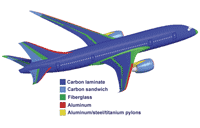
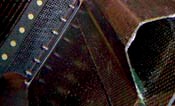

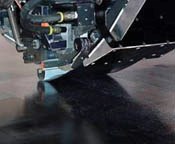
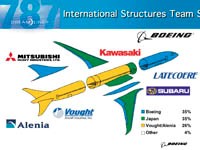
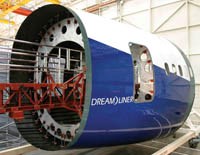














.jpg;maxWidth=300;quality=90)










